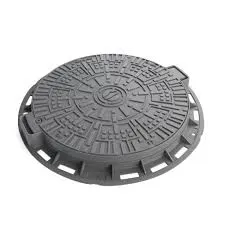Options for Pipe Dismantling Joints in Piping Systems and Their Applications
Understanding Pipe Dismantling Joints A Comprehensive Overview
In the realm of piping systems, efficiency and flexibility are paramount for optimal performance and maintenance. One crucial component that addresses these needs is the pipe dismantling joint. This specialized fitting serves as an invaluable tool for engineers and technicians in various industries, especially in water supply, oil and gas, and wastewater management. In this article, we will explore the purpose, design, installation, and benefits of pipe dismantling joints.
What is a Pipe Dismantling Joint?
A pipe dismantling joint, also known as a dismantling coupling or dismantling flange, is a mechanical device used to facilitate the removal, maintenance, or replacement of pipes or equipment without needing to dismantle the entire piping system. It consists of two main parts the body and the sealing mechanism. The design often includes a telescopic feature that allows for a certain degree of axial movement, enabling technicians to create space between sections of pipe quickly.
Purpose and Functionality
The primary purpose of a pipe dismantling joint is to provide access to piping systems while minimizing disruption. In industrial settings, where pipelines transport critical fluids and gases, the ability to perform maintenance without completely disassembling the system is invaluable. These joints are particularly useful for valves, filters, or any other fittings that require occasional inspection or replacement.
Moreover, these joints can handle significant pressures and temperatures, making them suitable for various applications. Their design ensures that the system remains sealed during operation, minimizing the risk of leaks and maintaining system integrity.
Design and Specifications
Pipe dismantling joints come in various designs, tailored to meet specific industry standards and application requirements. Typically, they are made from durable materials such as stainless steel, carbon steel, or ductile iron, which offer excellent corrosion resistance and mechanical strength.
The key specifications to consider when selecting a dismantling joint include
1. Size and Diameter The dimensions must match the existing piping system to ensure a proper fit. Common sizes range from small residential piping to larger industrial systems.
2. Pressure Rating Each dismantling joint is rated for a specific pressure threshold. It’s crucial to select a joint that can handle the operational pressures of the system.
3. End Connections These joints can be configured with flanged, threaded, or butt-welded ends, depending on the existing piping infrastructure.
Installation Process
pipe dismantling joint

Installing a pipe dismantling joint requires a systematic approach to ensure proper alignment and sealing. The general steps include
1. Preparation Ensure that the section of the pipeline where the joint will be installed is accessible. Isolate the section and relieve any pressure.
2. Cutting and Cleaning Cut the existing pipe at the required length, allowing for the dismantling joint to be fitted. Clean the ends to ensure a good seal.
3. Application of Sealant If required, apply an appropriate sealant to the joint to prevent leaks.
4. Fitting the Joint Align the dismantling joint with the pipe ends and secure it using the specified connection method (bolts for flanged joints, threads for threaded joints, or welding for welded ends).
5. Testing Once installed, conduct a pressure test to ensure that the joint is securely in place and there are no leaks.
Benefits of Pipe Dismantling Joints
The advantages of using pipe dismantling joints extend beyond simply facilitating maintenance. These include
- Time Efficiency Quick access to pipelines reduces downtime during maintenance.
- Cost-Effectiveness Minimizing the need for extensive dismantling saves labor costs and minimizes disruption.
- Flexibility They enhance the overall design of piping systems by accommodating future changes or upgrades.
- Safety By ensuring a leak-proof seal, they contribute to overall system safety and performance reliability.
Conclusion
Pipe dismantling joints are indispensable components in modern piping systems, offering a blend of efficiency, safety, and flexibility. By investing in high-quality dismantling joints, industries can ensure the longevity of their piping systems while facilitating easy maintenance, ultimately leading to more sustainable operations. Whether in waterworks, chemical processing, or other facilities, understanding the functionality and benefits of these joints is crucial for effective pipeline management.
-
Square Sewer Cover Enhances Urban SafetyNewsAug.01,2025
-
Pipe Fitting Requires Precise AlignmentNewsAug.01,2025
-
Manhole Step Is DurableNewsAug.01,2025
-
Manhole Cover Is Found WorldwideNewsAug.01,2025
-
Hole Cover Frame On RoadsNewsAug.01,2025
-
Gully Grate Improves Road SafetyNewsAug.01,2025
-
Man Hole Cover Round Load CapacityNewsJul.31,2025
